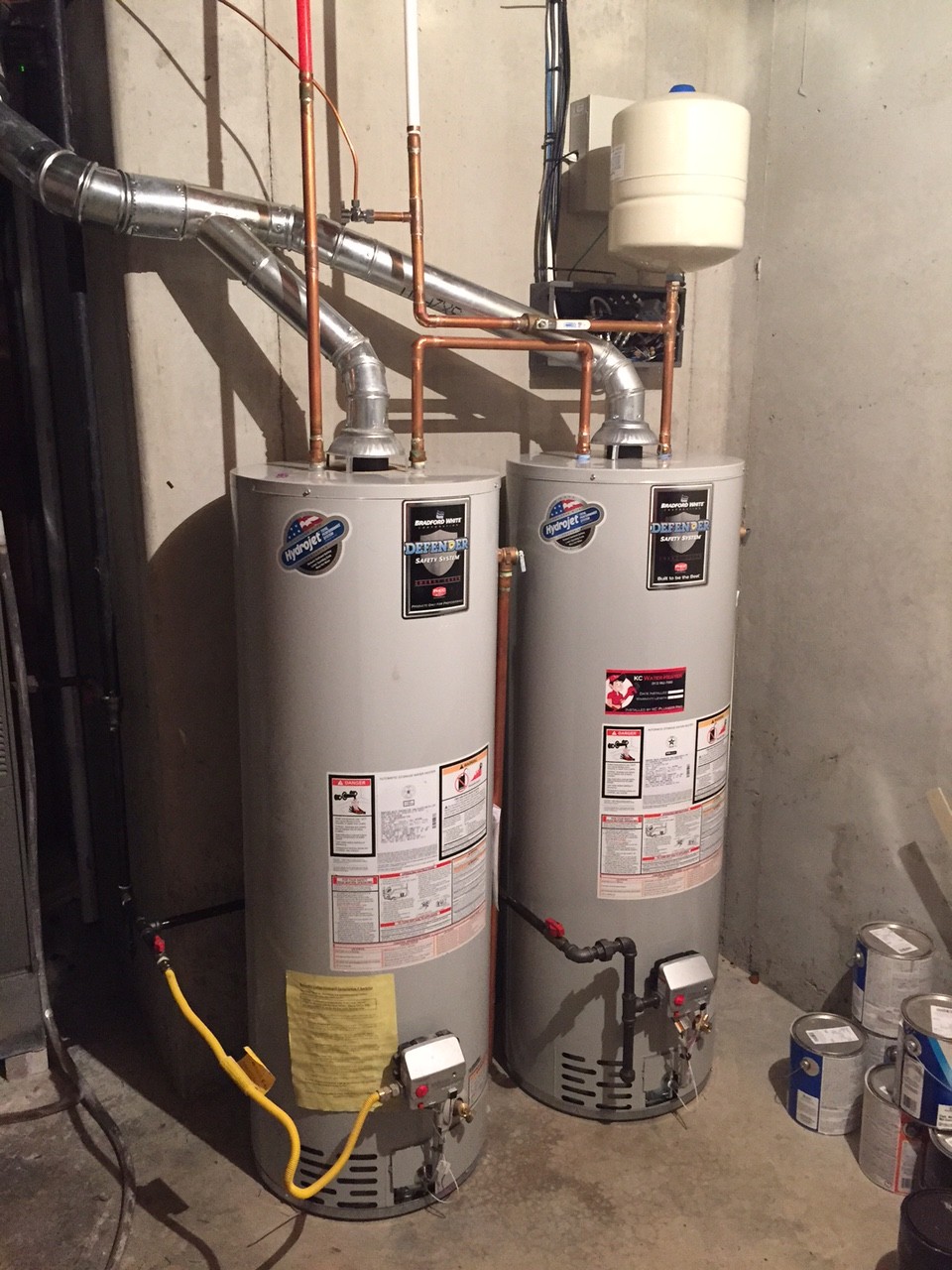Install Expansion Tank Hot Water Heater Video
Gas water heaters need proper venting for operation. To check the venting on your existing unit, close all windows and doors and turn on all gas appliances and exhaust fans and turn up the temperature on your water heater for a few minutes. Then, hold an extinguished match near the vent hood. The smoke should pull into the hood. If it blows back at you, you have a venting problem.
Call a professional for help. If you do end up installing a new water heater, you will repeat this test with the new unit. Some areas require seismic straps to prevent earthquake damage. These straps brace the water tank against the wall to keep the unit from toppling over. If you’re not in an earthquake zone, skip ahead to the next step.Seismic straps should be installed approximately 6 inches from the top of the water heater and 18 inches from the bottom.
Locate the wall studs closest to the strap measurement and drill pilot holes.Secure one end of the strap to the stud with a socket and ratchet. If block covers the studs, use a masonry bit to create a pilot hole. Wrap the strap around the water heater and adjust the size, securing the adjustable bracket on the opposite side. Pull the strap tight and repeat the process on the lower strap.
How to Install a Thermal Expansion TankA step-by-step guide on how to install a thermal expansion tank inthe home water heating system. How does it work and why it is importantto install one? What is an expansion tank and how does it workThethermal expansion tank is the device that is used in potable water andhydronic space heating to protect the system from excessive waterpressure.The expansion tank or vessel is designed to receive avolume increase of the heated water, reduce the pressure and protectthe system from failure.
The device contains the air membrane(diaphragm), usually made of rubber, which is pressurized with air onone side while on the other side is water from home plumbing.Asthe water temperature and pressure increase, the air bladder expandsmaking room for water expansion from the water heater. As thetemperature of water and pressure start decreasing, the diaphragm goesback to its design position returning the cooled water to the heater.The expansion vessel is used inwhere the flow preventers and check valves are installed, and since theexpanded water doesn't have anywhere to go, the expansion tank is thereto take the extra amount of water.Note: When water is heated from the temperature of 50 F to 120 F, the volume of water increases approximately by 2%.The expansion tank must be appropriately sized while the installed capacity depends on the size of the water heater. Why it is essential to install an expansion tankOneof the most common problems when the expansion tank is not installed,and the pressure starts building up, is water dripping from the(TPR valve). Due to the higher pressure, the expansion could affect thenormal operation of the valve, waste the energy, shortened unit’s lifeand become a potential safety hazard.Since water is considerednon-compressible, a much bigger problem occurs due to the extremelyhigh water pressure, and these include bulging water heater, tankrupture, dislocated air vent or gas and water fittings, and other.

How to install a thermal expansion tank - Instructions.Checkthe water pressure in your home. It should be close to 50 PSI. If it ishigher than 80 PSI install the pressure reducing valve.Checkthe pressure of air inside the thermal expansion tank. The pressureshould be equal to the maximum water pressure in your home. Use thehand pump to increase the air pressure if needed.It is recommended to install the thermal expansion tank on the cold water line, horizontally and close to the water heater.Use the threaded T- fitting, Teflon tape, and pipe wrench to make the watertight connection.Remove the trapped air by opening the hot water tap.
How to check if the expansion tank workingWewill assume that the expansion tank is using the diaphragm, separatingwater and air. It is installed on the cold side of the water supplyline.Tap on both upper and lower part of the tank. When you tapon the upper part, it should sound as hollow. If you hear a thud sound,then the upper chamber is filled with water indicating that thediaphragm is damaged.You can also check the temperature of theoutside tank surface, by touching the top and bottom of the device.
Itshould be cold on the tap, where the air is located, and warm on thebottom, where warm water from the tank is stored.Use the manometer to check the pressure inside the expansion tank. The reading should be per manufacturer’s specs.Ifthe pressure inside the water heater tank is high and expansion tank isnot working correctly, the TPR valve will be dripping. Sizing tips and calculatorsDid you know that you can use an online calculator to calculate the size of an expansion tank?The website has one; you have to provide information such as:.Water heater volume (capacity).Low temperature of the incoming water.High temperature or the maximum temperature of the outgoing water.Initial pressure of the incoming water.Final pressure or maximum desiredMostof the expansion tanks for home use have a capacity between 2 and 5gallons. If you are not sure about the size, it is better to install anoversized expansion tank. If you install a smaller expansion tank thanwhat is required, the excess pressure will cause relief valve discharge. ConclusionInstallingan expansion tank is a DIY home project that can be done by anyhandyman for a short period.
Hot Water Heater Expansion Tank
They are not expensive to purchase – theycost somewhere between $20 and $100. Also, for installation, you needsome copper pipes and material for soldering or galvanized pipe andfittings. No matter if the house you live in is with the closed or openwater supply system, install it, as the device will protect the systemnot only from thermal expansion and high pressure but permanent damagesto the heater and heating system.